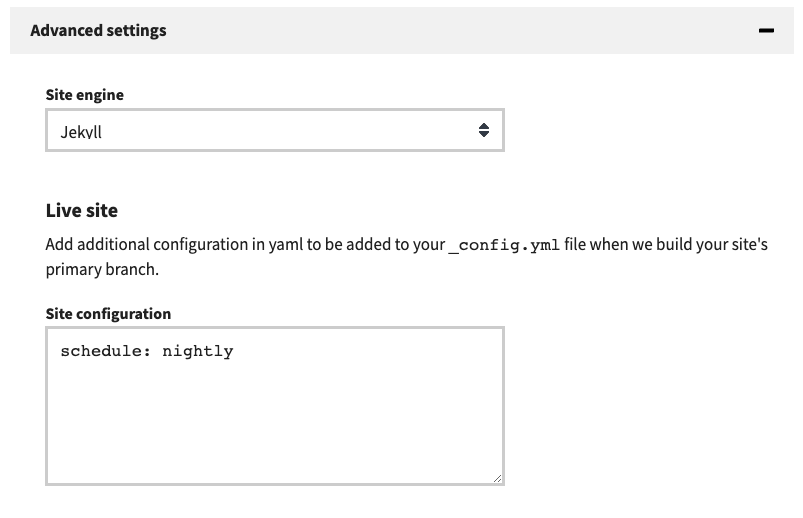How Builds Work
Pages is a continuous deployment-like build environment for sites. It works by setting a webhook on your site’s GitHub repository and generates your site on each push event to that repository, then uploads your site files to S3. Changes made to the site’s content and files in its repository through the GitHub web editor or otherwise launch rebuild tasks of the site in a build environment container.
If you don’t want to use the Pages templates, you can add your own GitHub repository to build a completely custom site. When you add an existing repository, you specify a default branch of your repository to serve as the “production” version of the site and choose your build engine.
Pages is designed to be a modular service so HOW you generate your site is up to you. Some people customize their sites by creating new templates. Others use a default template content, editing with GitHub. When used this way Pages acts a no-configuration, production-ready hosting solution for GitHub-based static websites, hosted using cloud.gov tooling, with a custom domain.
When building out your sites, please remember that all government websites must meet section 508 accessibility standards. 18F provides guidance for building accessible websites.
Scheduling nightly builds
Sites with public repositories can schedule builds to occur nightly. If you wish to schedule automatic builds of your live or demo site, add the following information to your site/demo configuration in the “Site settings” tab:
schedule: nightly
as shown below.




